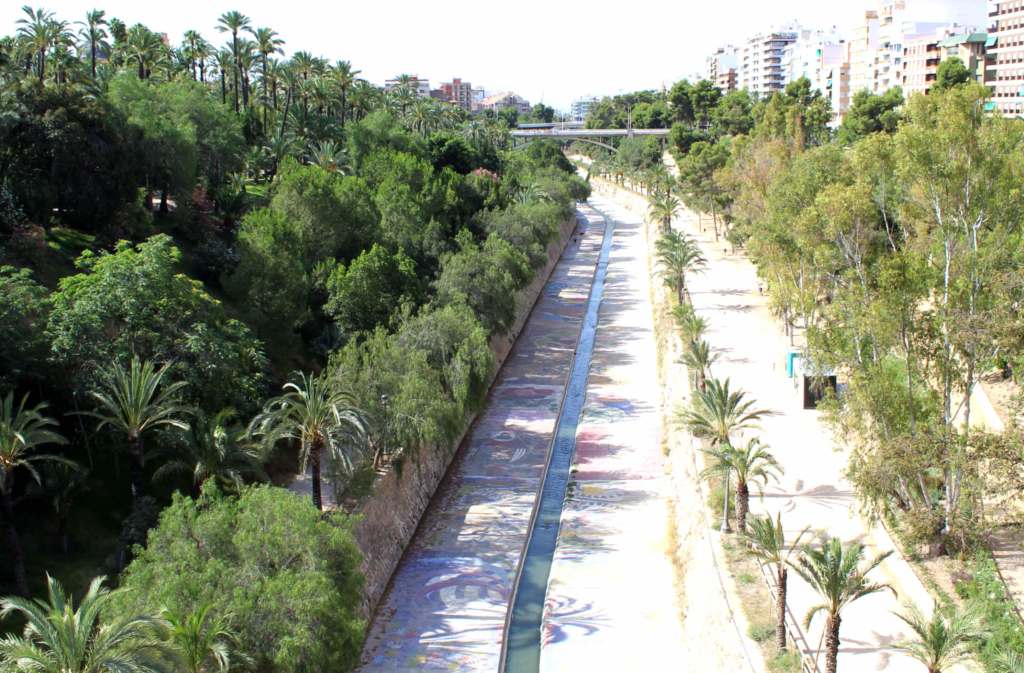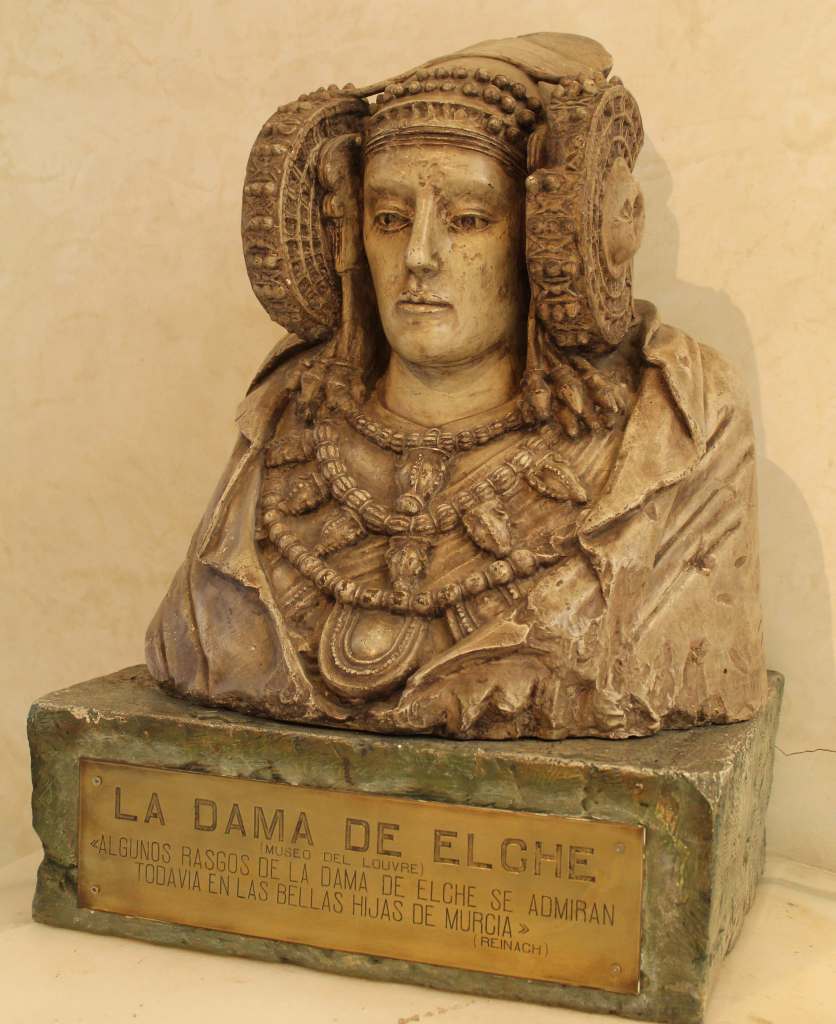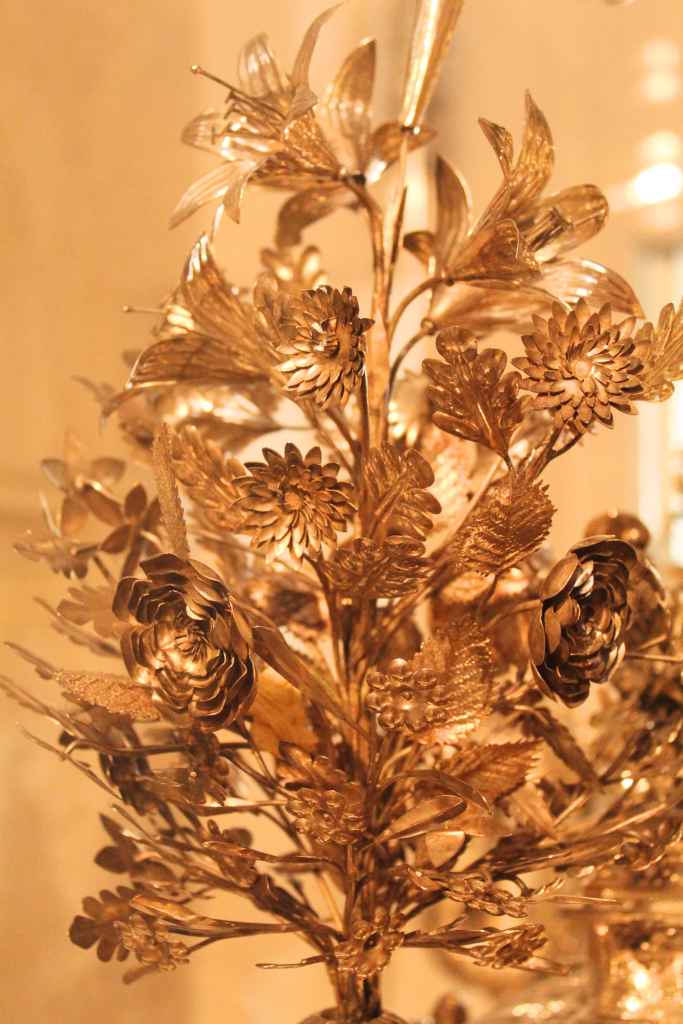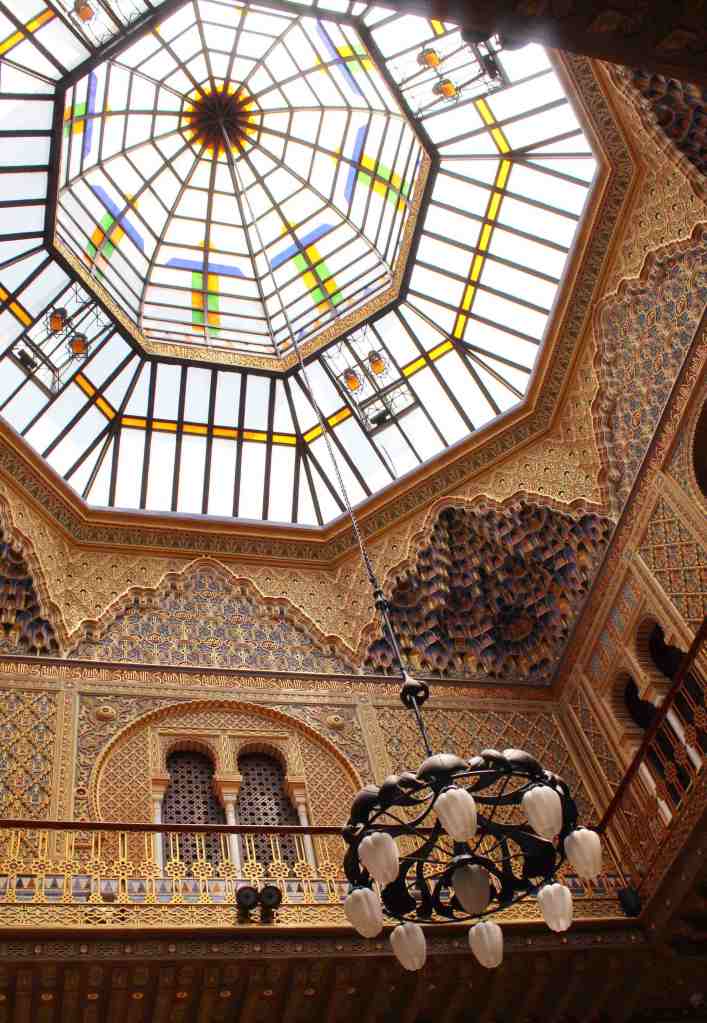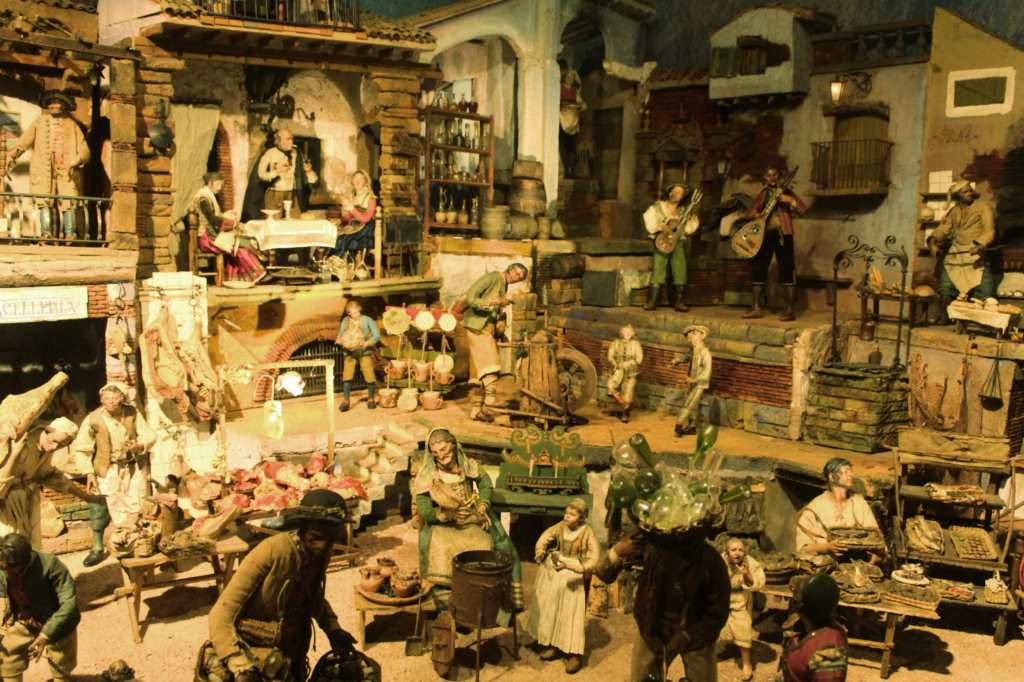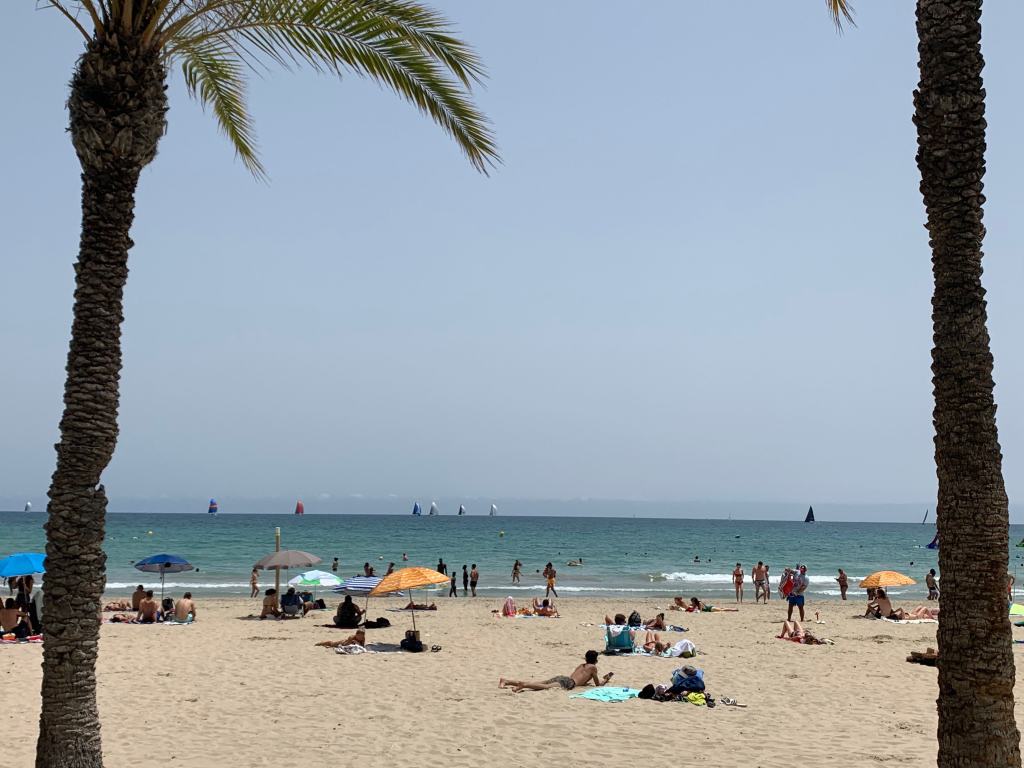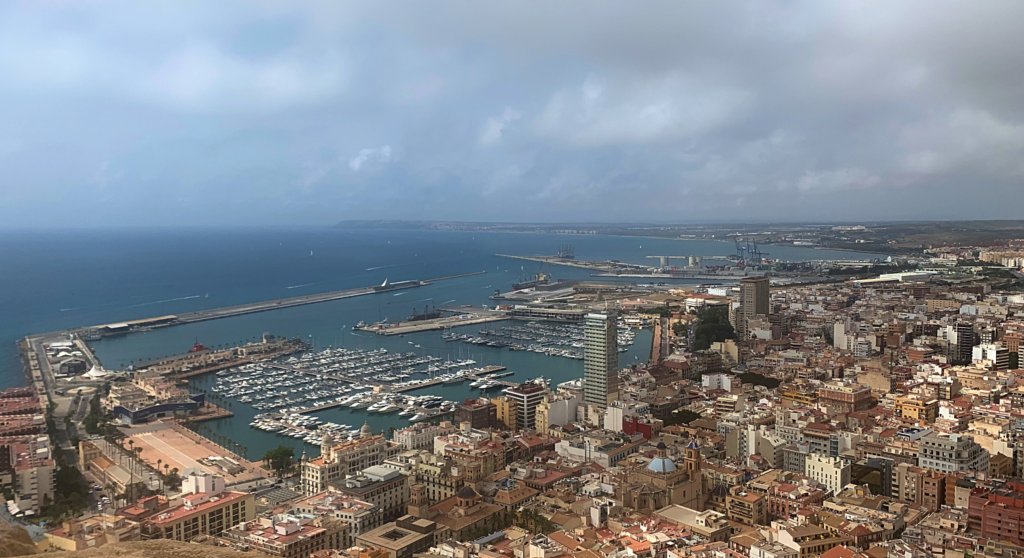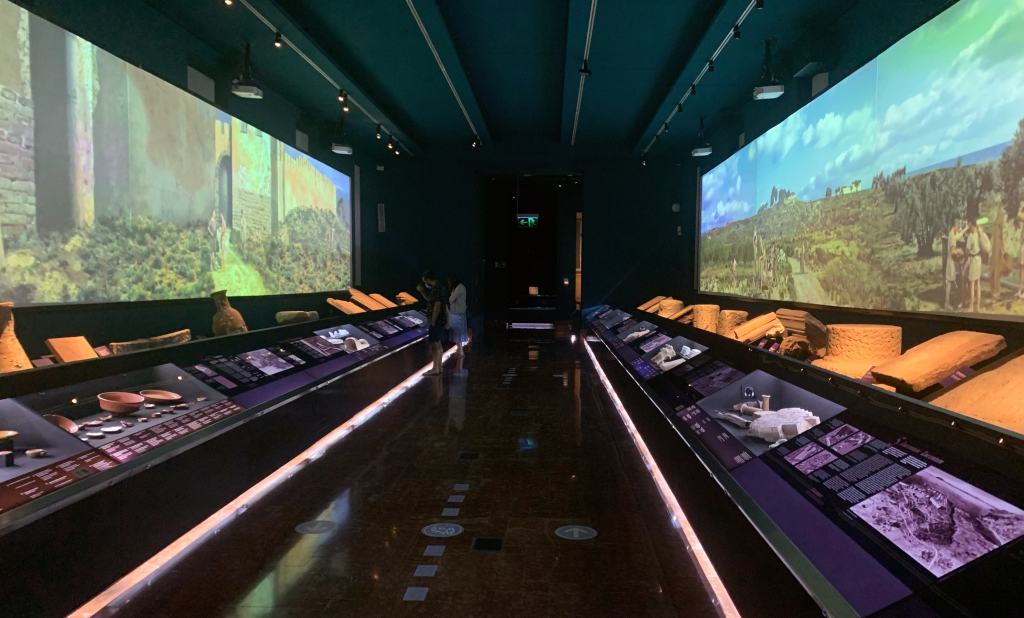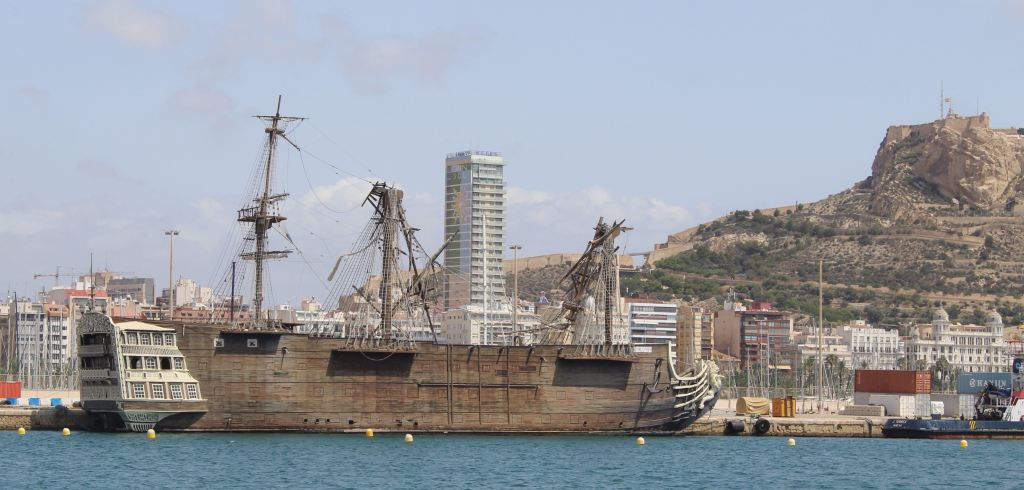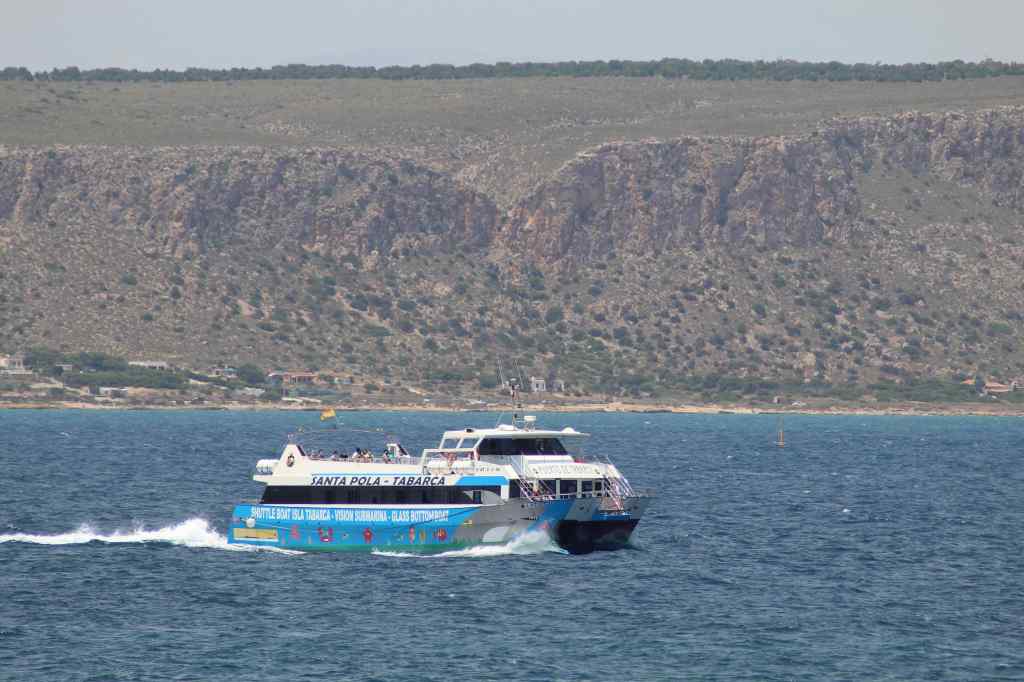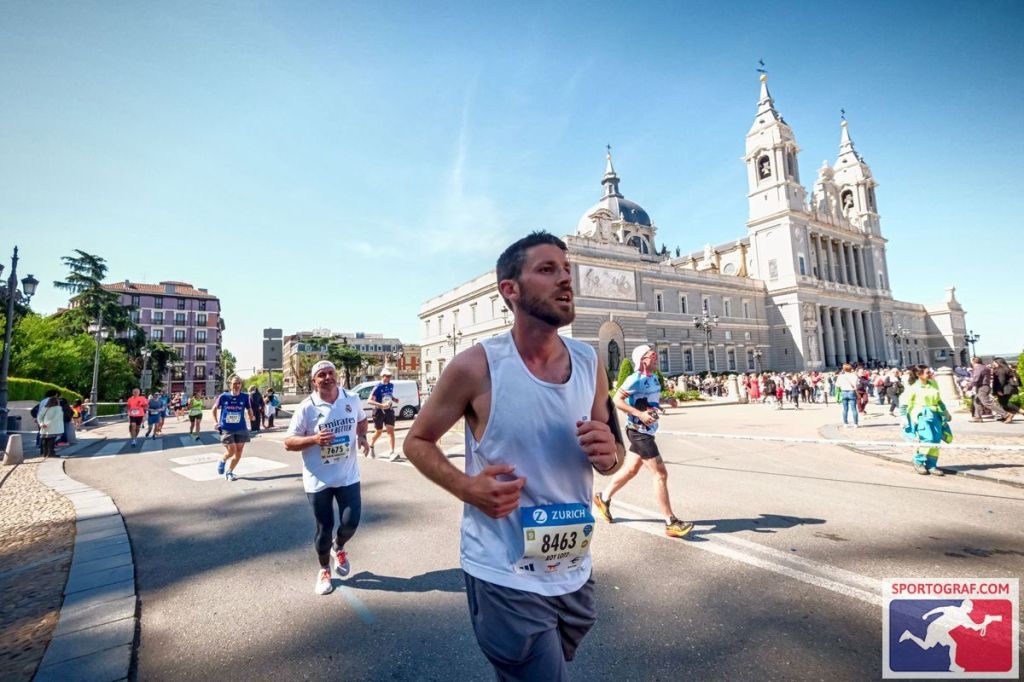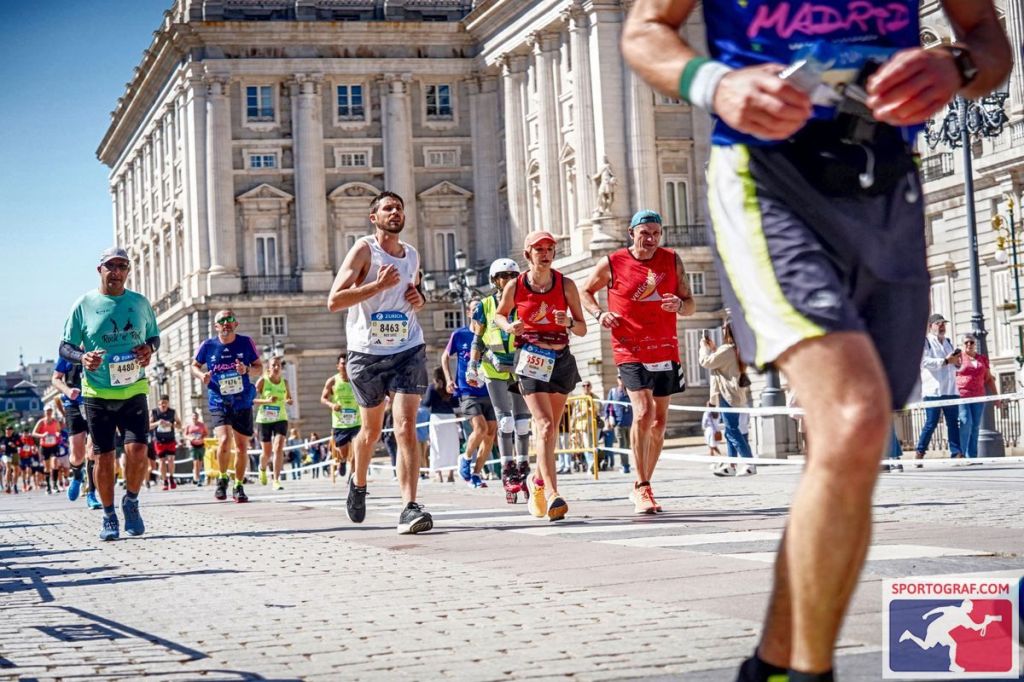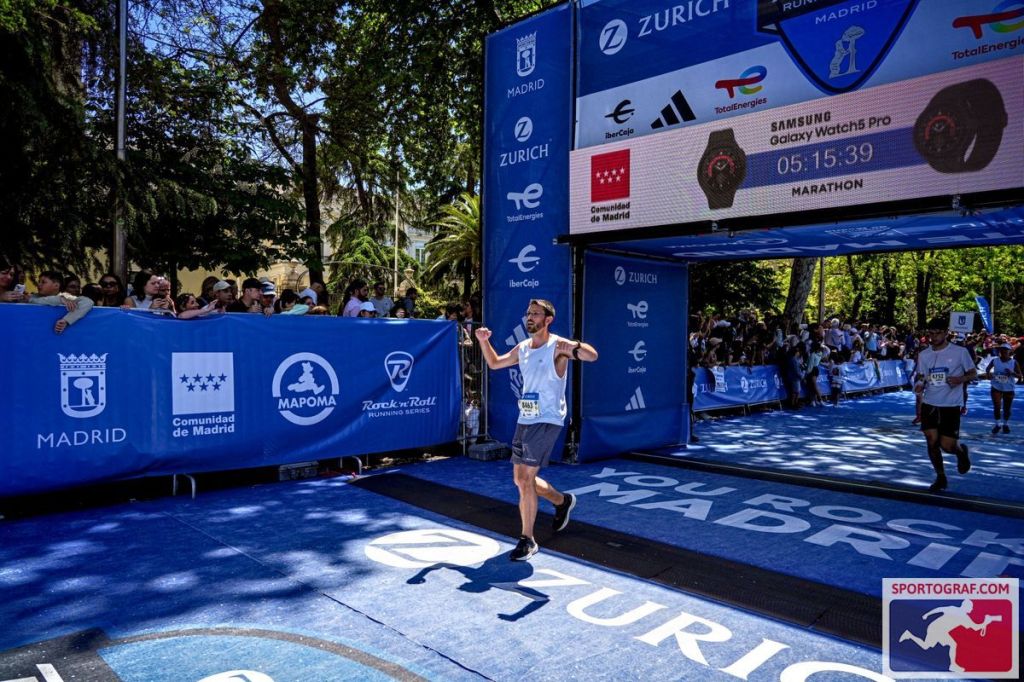In the September of 2020, Rebe and I attempted to visit the Pyrenees. I have already written a post about what a disaster it turned out to be, so I will not repeat the story here. But suffice to say, we did not make it to our destination.
It was now December 2021. Over a year had passed, and we decided to make a second attempt. Our plan was to explore the Pyrenees region by car. For our home base, we chose the city of Jaca, which is close to the major sites while still large enough to be a good place to spend the evenings (“large” being a relative term: the population is about 13,000). The car was rented, and we made the four-hour drive up to Jaca on a Friday evening, arriving just before sundown.
We had just enough time to settle into the Airbnb and have dinner. Worn out from working that morning and the trip up, we fell asleep early.

“Oh my god!” I said, looking out the window when I woke up.
“What? What?!” Rebe said, still in bed.
“It’s snowing!”
“Oh.” She rolled over, annoyed at being woken up for something like snow.
She may not have been impressed, but I looked out the window completely amazed—and not a little nervous. The snow was raining down in great globs of white. I had seen the previous day that some snow was forecast, but this was a genuine blizzard. And we were not prepared.
Friends had warned me about this. I was told by every Spaniard I knew that I ought to bring chains for the tires. But being perfectly ignorant about cars, I assumed that this would be easy to procure. Indeed, I expected the car to come with chains, or at least the rental agency to have some available. This was not the case, however.
Well, no problem, I figured that we would buy some on the way up to Jaca. When we stopped at an automotive store near Zaragoza, however, I realized that this was going to be more complicated than anticipated. I had reserved a normal-sized car from the agency, but for whatever reason we had been given a Toyota RAV 4—in other words, an SUV, with big tires. The automotive store informed us that, for a car of that size, the tire chains would cost well over 100 euros. With only light snow predicted, and for a vacation of just three days, this seemed to be a waste of money.
Not anymore. The snow was coming down in sheets and I knew there was no way we would be able to use the car that day. The only thing to do was to explore Jaca.
The city had been transformed. Whereas yesterday there had not been a bit of snow on the ground—the grass was green and the surroundings mountains visible—now everything was covered in white, and the air was so thick was snow that you could hardly see 100 meters.
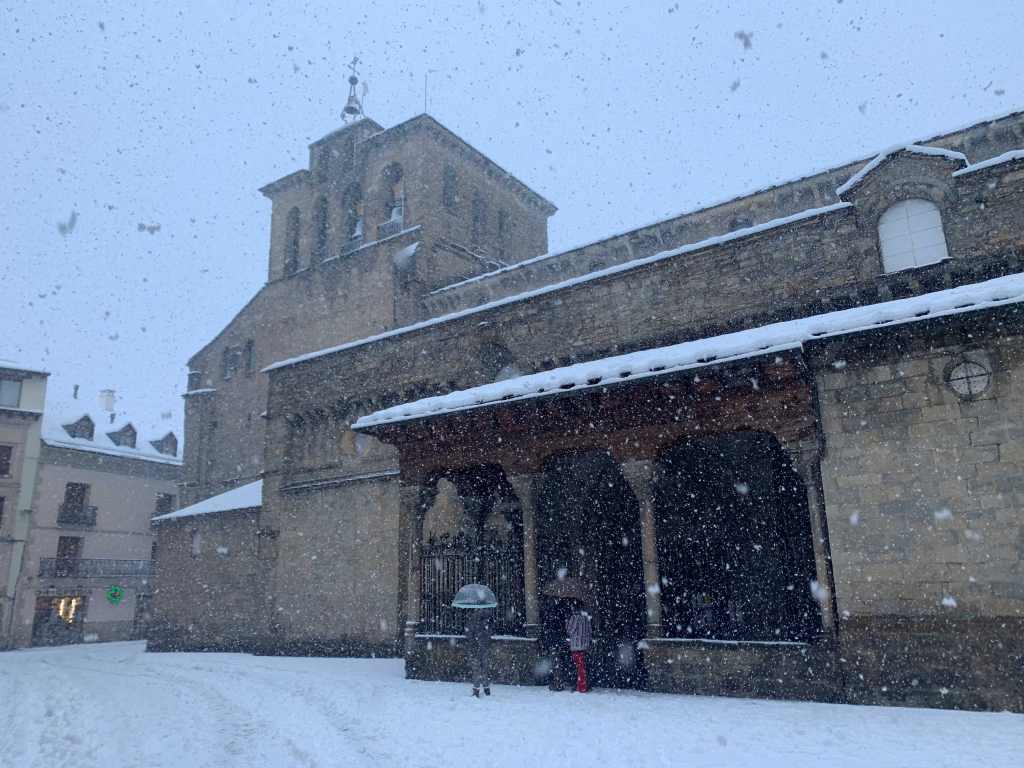

It had been years since I had seen snow like this (probably not since I was in college, in New York), and I was completely transfixed. Rebe and I bundled up and waddled around the city taking photos of everything. But we could tell that snow was a matter of course for the locals, as the shops and cafés were opening up as usual.
Indeed, we were surprised to find the city’s largest monument open for visits: the Ciudadela. As its name indicates, this is a citadel, which sits right in the center of the city. It was constructed in the 17th century as a defensive outpost against the French. (Nearby, just outside the city, there’s another fortress built for the same purpose: Fuerte Rapitán.) The citadel did not perform its function satisfactorily, however, as when the French invaded in 1809 they captured the citadel (without resistance!) and held onto it for five years. Later, as with many fortresses, castles, and other monuments in the country, this citadel was used to hold prisoners during the Civil War—in this case, by Franco’s forces. Apparently the conditions were awful.

Compared with many of the ruined castles scattered over Spain, this fortress is visibly a modern construction. Designed by an Italian (Tiburcio Spanocchi), it was built with a series of low, thick walls arranged concentrically in a star pattern. The tall, flat walls of castles are almost useless against cannon-fire, you see. With this design, it is difficult to hit the walls at a right angle. Further, this design allows the separate corners to defend one another, since the guns can be aimed at the fortress itself.

Yet I really can’t say that military history was on my mind as I walked over the defensive ditch and up onto the walls. Rather, the fortress just served as yet another stage for the falling snow to dance across. But we did make it into a few of the building’s exhibitions. The Ciudadela now houses a local military museum. There was information about the history of different military units, special mountain forces, different badges and ranks, and so forth. These exhibits passed briefly through my awareness as I stomped through the halls with my wet boots. It just did not seem like a day to be visiting a museum.

Rebe and I soon finished the visit and were off exploring the town again. I wanted to do a bit of hiking, so we walked the edge of town. Children were building snowmen, families were hurling snowballs, friends were skiing across parks, and plows would occasionally scrape by. Every time a car slowly made its way down the streets, its tires slipping pitifully on the ice, I observed with a pit in my stomach. Unless we could find tires, this was our fate.

But I wanted to enjoy the morning, at least, before we worried about driving. So we made our way through a park and down a path to the Aragón River. With so much snow on the ground, the going was slow and tiring. We decided not to press our luck and turned back at the bridge, returning to town thoroughly worn out from climbing the small hill that leads up from the river. To recover our energy, we went into the nearest café, where I did something I hadn’t done in years: drink a hot chocolate. It was so warm and delicious that I instantly decided I ought to do it more often.

This was the only “eventful” part of the day. We had lunch in some place or other in town and then decided we ought to try to get tired for the car. First, we tried a gas station on the edge of town. Of course, we were out of luck. Half the city was out looking for chains that day and they were completely sold out. We were advised to try a store on the edge of town called Merca Asia. Now, it seems very odd to an American, but there is a type of general goods store in Spain which is usually called some variation of “something-asia,” most commonly “Hiperasia.” The proprietors are normally Chinese immigrants and the enormous stores have virtually anything you can imagine in them.

So Rebe and I walked along the old Jaca Highway, our boots soaked through, wind whipping through our coats, to this store. We were disappointed but not surprised to find it already full of people asking for the exact same thing: tire chains. Without much hope, I asked the man if he had any chains in our size. He said no, but more were soon on the way, and he asked for my number to call me when they arrived. This did not seem very promising but, just in case, I gave him my number anyway. Then we walked back into town, ate dinner, and went to sleep.
The next day we, unfortunately, had plans. Rebe had booked us a ride on a zip-line in a nearby town, and we had to get there by noon. This meant driving. At least the roads were considerably better than they were the previous day, but that is not saying much. There was still ice everywhere. The Spanish do not salt the roads as aggressively as we do in New York, apparently.
We found the car where we had left it after the drive up. It was covered with a thick layer of snow. We needed 10 minutes to clear everything off. Then there was the question of getting out of the parking lot. Unlike the roads, it had not been plowed, and it was not covered with a thick layer of ice. I was really not sure whether the car would be able even to get out of the parking lot.
I should mention at this point that this was my first time driving in snowy or icy conditions, so I had absolutely no idea what I was doing. But I did manage to back up and get on the road. Going slowly, already in a panic, we followed the GPS out of the city. It directed us up a steep hill. But as soon as we began to drive up, I slammed on the breaks. The hill was also covered in a thick layer of ice and I was not sure whether the car would even be able to make it up on road tires. Already half crazed with fear, I slowly backed the car off the hill and got back on the highway, which at least was quite clear.
The problem was that the highway did not lead in the right direction. We had to turn around. The GPS directed us to a place where we could easily make the maneuver. But we had another problem. The little exit ramp where we were instructed to go had been left unplowed, and we ran straight into a snowbank. Now I had to free the car from the snow and merge back onto the highway, with traffic coming from both directions. To make matters worse, cars started appearing behind me, waiting to make the turn.
When the coast was clear I stepped on the gas. The wheels turned but nothing happened. We were absolutely stuck. I tried again, pumping the pedal, with zero result. At this point my panic and shame was extreme. I was convinced that I would either be killed in an accident, killed by angry fellow-motorists, die of a heart attack, or get arrested for incompetent driving. (Rebe, meanwhile, was extremely calm.) When the man in the car behind me stepped out and started walking towards us, I expected the worst.
But he was politeness itself, and he offered to push us out of the snowbank. With just a slight shove, we were freed, and my heart soared in gratitude for this everyday hero. Soon enough, we were on the highway driving toward Hoz de Jaca. The landscape was beautiful in the snow, which made every hill and rocky outcropping look like a mountain in the distance. We took the exit and began to drive on local roads, which were both more crowded and snowier than the highway. Several signs warned that chains were required by law on the road ahead, warning of fines for non-compliant vehicles. I got so nervous that I pulled over and had Rebe call the zipline place. They assured us that chains were unnecessary and, moreover, that there was plenty of parking.
Their assurance did not make the drive any less stressful. The road narrowed and narrowed until—as often happens in rural Spain—it was only about one and a half lanes wide, though it was for both directions of traffic. In normal circumstances, this is managed by having one car pull off into the shoulder, though when the road was hemmed in with snow banks this proved difficult. I nearly had a heart attack when we had to drive over a narrow dam and then through an equally narrow tunnel (I kept wondering how the locals deal with these roads), but finally we arrived in Hoz de Jaca.
Yet the promise of parking was exaggerated. There was, indeed, a parking lot, but it had not been plowed and was completely useless. Instead I drove up a side street, hoping to find something there. This was a poor decision. This road was also not plowed, and after about 50 meters it was completely impassable. I realized that I had to go back down the hill in reverse. This was not easy, as the road was full of parked cars and it twisted around houses and trees. Luckily, another savior appeared at this moment, in the form of an old man from the town. He stood behind us and yelled instructions, allowing us to navigate the treacherous street (though I still bumped into a tree). I thanked the man from the bottom of my heart as he guided us into a parking spot.
We got out and prepared ourselves for a high-adrenaline experience. Rebe went inside to inform the zipline folks we had arrived. She emerged a few minutes later—angry.
“They say there’s too much wind,” she said. “And they don’t know if they’ll be able to do it today.”
“So what do we do?”
“Let’s just go.”
That seemed wise. The thought of waiting around in the cold for an undefined amount of time was not appealing. And our money would be refunded.
Defeated, we got back in the car and made the harrowing drive through the tunnel and over the dam to the highway. Our next destination was the National Park of Ordesa and Monte Perdido. This is perhaps best described as the Spanish Yosemite: a beautiful valley ringed by epic mountains. It is both a national park and a UNESCO World Heritage site, and is doubtless one of the major attractions of the area.
The drive there was fairly easy until, at a turn-off, there was a sign flashing that chains were required past that point. Right beside the exit was a gas station, so we pulled over to have some time to think. I went inside and asked the attendant whether chains were really necessary. He said yes: the road to the park was pretty rough. Surprisingly, the gas station had chains in the correct size for our SUV. But again they cost well over 100 euros, and could not be returned. Rebe and I thought it over and decided, again, that it wasn’t worth it to buy chains for a car that wasn’t ours, for such a short amount of time.
In retrospect, we probably should have just bought the chains we were offered on the way up, and saved ourselves all this hassle. To be fair, however, I think that the Ordesa National Park is best in Fall and Spring, and that visiting after a heavy snowfall would have been difficult and disappointing. But this could easily be a case of sour grapes.
Defeated once again, we got back in the car and decided to call it a day and return to Jaca. Indeed, we felt so discouraged by the turn of events that we decided to cut short our vacation early. This was actually the official advice. All along the highway, lights were flashing, warning everyone to “return home early,” as another big snowstorm was set to hit on the last day of the long weekend (i.e., the day when everybody would be on the road). We decided, after everything we had been through so far, not to tempt fate further.
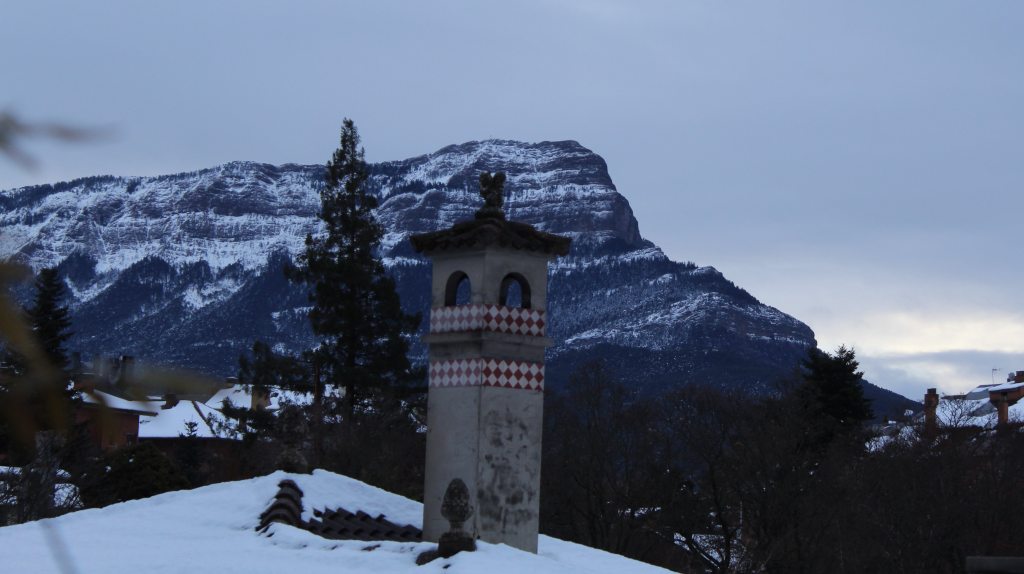
This just left one evening in Jaca. I took a walk around the city in the waning light, enjoying the distant vistas of snow on the mountains, and then I decided to visit the Cathedral and the attached Diocesan Museum. Both were surprisingly excellent. Indeed, as I have often mentioned on this blog, local museums in Europe can be of astonishingly high quality, and this is yet another example of this principle. Though small, the collection of Romanesque art is of astonishingly high quality, featuring many beautifully-painted naves. If an American museum had this exhibit, it would be justly famous. Yet I was alone as I appreciated the art.
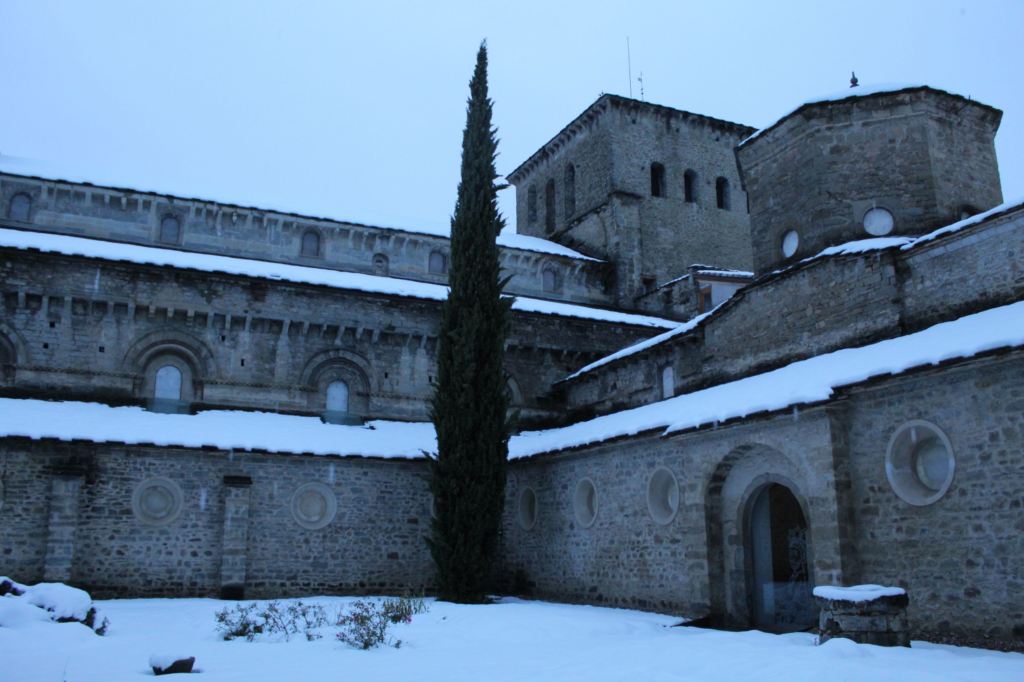
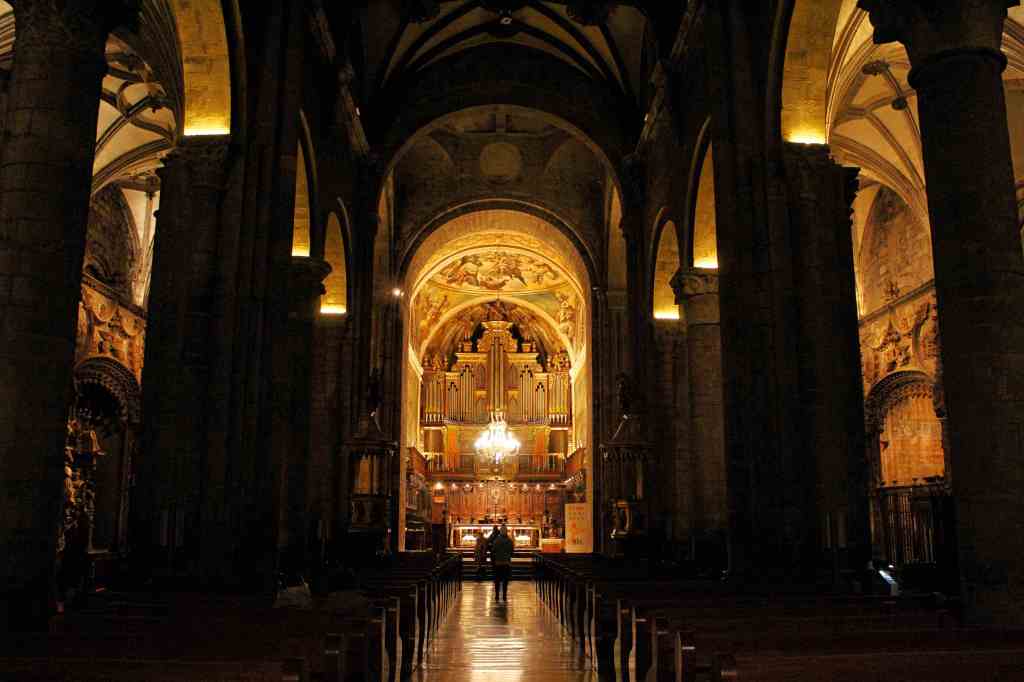
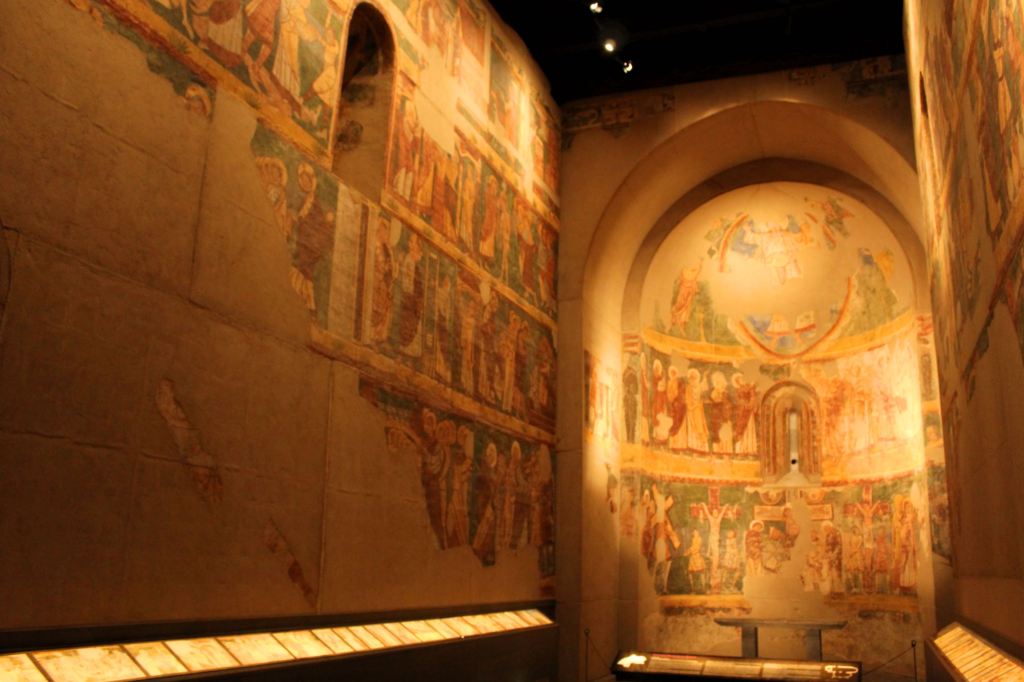

We had our final dinner in Jaca and prepared to leave early the next morning. I should say that I found Jaca to be quite a congenial place to be stuck in. There are plenty of bars and good restaurants and, though small, the center of the city is very attractive. Indeed, for such a small place, the number of interesting places to eat and shop is impressive. There was even an Iranian-Spanish restaurant (Nadali) and a local brewery (Borda). So it really did not feel very disappointing to have to spend so much time in Jaca.
But it did feel somewhat disappointing to be leaving with our metaphorical tail between our legs, without having really seen the Pyrenees. I suppose Rebe and I will have to make yet another attempt to visit this part of the country.
Epilogue: El Monasterio de Piedra
We began driving early, hoping to squeeze in some last-minute sightseeing. First, we took the road north, towards France, hoping for some good views of the mountains. But we were not rewarded with any dramatic vistas, as the highway passed through a relatively flat area. So we turned around and headed back towards Madrid. The weather was brooding and threatening. As the highway led up over a range of hills it began to pour rain. Many other cars were on the road with us, doubtless heeding the same warning about the incoming storm.
By midday we had gone by Zaragoza and soon we arrived at our main stop: El Monasterio de Piedra. I have already written a long post about this place and its history, so I will only say here that it is a kind of romantic landscape garden that is well worth a visit if you are anywhere in the neighborhood. I think the pictures speak for themselves.




After touring the place and having a quick lunch, we got back in the car to complete the drive. The driving conditions soon got significantly worse than before. As darkness fell, we entered a mass of dense fog, making it impossible to see anything except the lights of the other cars on the road. It was quite a dizzying and even a slightly dreamlike experience to be driving without being able to see the road—just intuiting where it must be by the location of the cars in front of me. About halfway through this ordeal, Rebe informed me that cars in Europe are required to have fog lights. We switched them on and they did help quite a bit.
I felt a great sense of relief when we returned the car. Now I would not have to even think about snow chains for the foreseeable future. And despite the many obstacles, it did not have a scratch on it. The next day—our planned day of return—we slept in.
I was feeling rather good about our decision to come back early, until one of my coworkers told me that he had taken a skiing trip to the French Pyrenees, and had no trouble driving back on the day of the storm. Indeed, there was hardly any snow to speak of. Defeated again!



